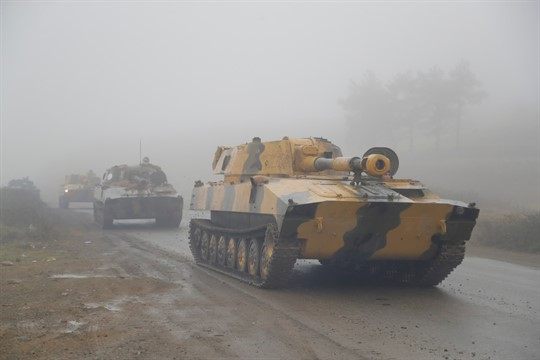Last week’s Russia-brokered agreement between Armenia and Azerbaijan ended 44 days of bloody clashes over the disputed enclave of Nagorno-Karabakh—the first interstate war fought by conventional forces in recent years. The deal calls for Armenia to give up large swathes of territory in and around the breakaway region, which lies within Azerbaijan’s internationally recognized borders, and Armenian Prime Minister Nikol Pashinyan called the deal “incredibly painful.” The ostensible Azerbaijani victory, gained at substantial cost in men and materiel, has triggered intensive interest among military analysts about the conflict’s lessons for future warfighting.
In particular, the wearing down of Armenian air defenses and armored platforms by unmanned aerial vehicles, or UAVs, has led to significant debate over the continued utility of main battle tanks for high-intensity military operations. Indeed, a narrative has emerged in the media, fueled by propagandized videos shared on social media channels, that armor may be obsolete in the face of air-launched precision strikes carried out by UAVs.
 Eurasia Press & News
Eurasia Press & News




